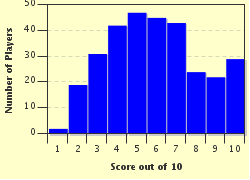Quiz Answer Key and Fun Facts
1. Sir Henry Cole and his artist friend John Horsley began a custom in Britain in 1843 which has spread far beyond the boundaries of Britain. What is this custom?
2. The coming of "Sinterklaas" is celebrated in Holland on the evening of 5th December which is the day prior to Saint Nicholas' birthday. Who is the character who comes with him to deal with naughty children?
3. In which European country is Oplatek shared with others and carp is part of the Christmas food menu?
4. On what date is Christmas Day celebrated in Russia?
5. Some countries have a service during the Christmas period which involves children making an item from an orange, a candle, four sticks, a red ribbon and fruit & nuts. What is this item called and the service named after it?
6. In which part of Europe is St Lucia's Day mainly celebrated on December 13th?
7. The Ilex and the Hedera are an integral part of the celebrations in many parts of the world - how are they better known?
8. This is another plant which is brought into the home during the Christmas period and is part of a tradition begun in Mexico and has spread to the USA and Britain. This plant has bright-coloured leaves - most popularly red - what is it called?
9. The bringing in of mistletoe is a tradition in many places at Christmas - the kissing bough. However, before becoming part of Christmas it was part of Winter Solstice celebrations for another religious group. Who were they?
10. The most widespread of Christmas customs is probably the Christmas Tree. Which country supplies a giant tree for Trafalgar Square in London each year?
Source: Author
baker13
This quiz was reviewed by FunTrivia editor
stedman before going online.
Any errors found in FunTrivia content are routinely corrected through our feedback system.

